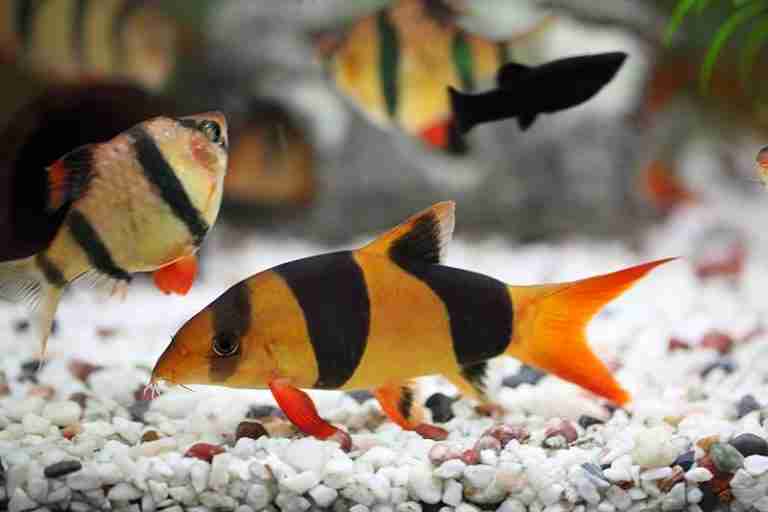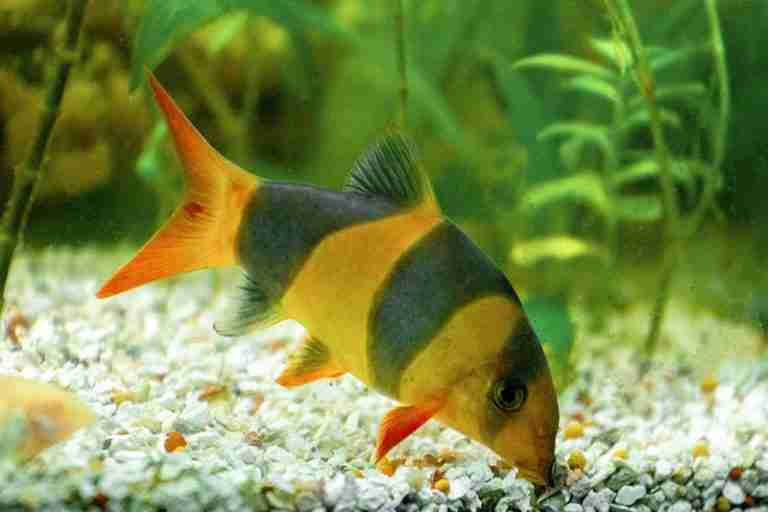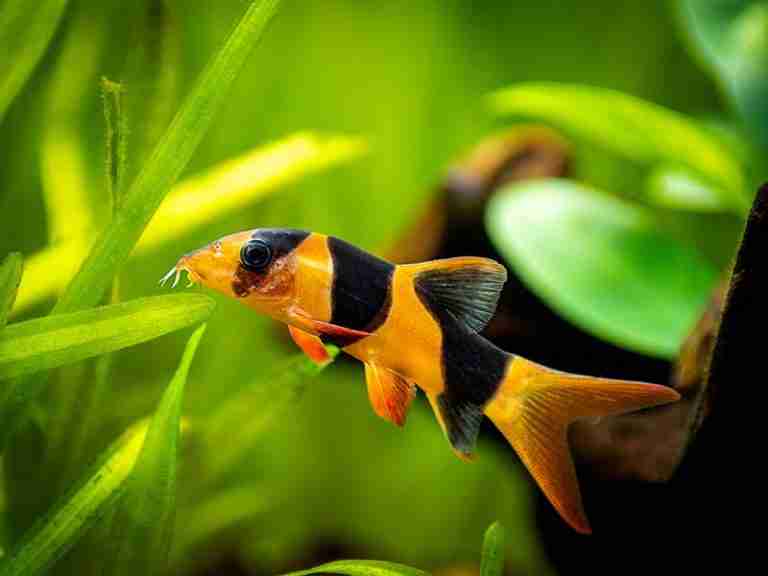Clown Loaches Size Guide (How big do they grow)
Clown Loach (chromobotia macracanthus), or tiger botia, are wonderful freshwater fish to have in your aquarium, but what do you know about an adult Clown Loaches size and growth rate, and how big do Clown Loaches get?
On average, Clown Loach measures 3mm in length at birth, growing to 1 inch in its first 6 weeks. In the wild, a full-grown Clown Loach can reach 16 inches +, with reports of 12 inches or more in captivity. You can expect an average Clown Loach to reach a maximum size of 6-10 inches in an aquarium.
There is varying information when looking for the biggest clown loach recorded, however, one report of the largest clown loach ever known to be housed in a home aquarium is 16 inches long.
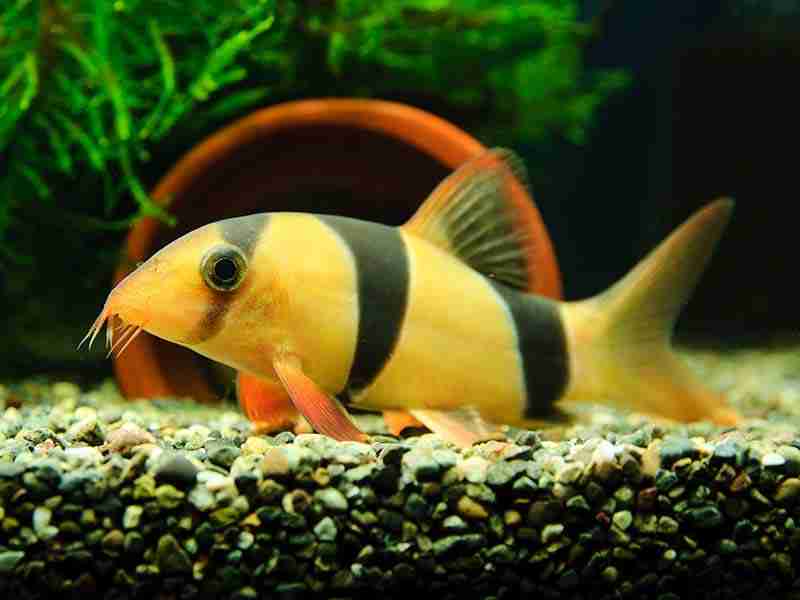
Baby Clown Loaches measure around 3mm, but breeding is not the easiest (even for experts), so many of those for sale in fish stores have been captured.
If you are interested, I have written a complete guide to Clown Loaches. It covers everything you need to know about this species of loach, from its natural habitat, diet, tank setup, water parameters, breeding, and much more.
Clown Loaches Size Chart & Growth Rate
The table below will give an average of a Clown Loach’s growth rate and expected size throughout its development until it becomes a full-grown adult clown loach.
| Age | Size in cm | Size in inches |
|---|---|---|
| Birth to 6 weeks | 3mm to 2.5cm | 0.12 to 1 inch |
| 6 weeks to 1 year | 2cm to 7.5cm | 0.8 to 3 inch |
| 1-2 years | 5cm to 15cm | 1.95 to 6 inch |
| 2-5 years | 5cm to 16.5cm | 1.95 to 6.5 inch |
| 5-10 years | 12.5cm to 20cm | 5 to 8 inch |
| 10 + years | 15cm to 25.5cm (+) | 6 to 10 inches (+) |
The sizes in the table above are expected averages aggregated from research data, other aquarists, and my own experiences.
You can see from this table how fast a Clown Loach will grow, especially in the first couple of years of its life until maturity. Their growth gradually slows until around 5 years of age, when their growth rate reaches its slowest phase.
Plenty of aquarists have reported Clown Loach sizes of 6-8 inches within their first 2 years, whereas others have reported sizes much smaller. Many factors need to be considered when estimating growth rates for any fish.
You will also notice that the clown loach size chart is a very broad guide, especially at 5-10 years and 10+ years, because each Clown Loach will develop at a different rate in the early years, and it would therefore be difficult to estimate a clown loach full grown adult size.
How Fast Does A Clown Loach Grow To Full Size?
Once an adult Clown Loach reaches around 6-8 inches in length, growth slows to between 1/2 and 2 inches per year. Whether a Clown Loach reaches full size within the first 5-10 years of its life will depend on many factors, such as living conditions, general health, and feeding.
The point at which you will have a full-size, full-grown clown loach can be difficult to estimate. Clown Loaches will experience the main growth between the ages of 1 and 5; however, a healthy loach will continue to grow throughout its life.
If your Clown Loach reaches 10 years of age, this is considered good in captivity and will be considered a fully-grown clown loach.
Clown Loach Lifespan
The average Clown Loach lifespan when in captivity is around 10 years, and with good care and a healthy environment, this can increase. There are reports of wild clown loach living as long as 20 years or more.
Even though it is doubtful that you will manage to keep a Clown Loach in an aquarium for 20 years, it is worth understanding that they are often a long-term investment in your fish tank.
The average clown loach age depends on whether they receive good care and a healthy diet, but be prepared as you may end up with a huge clown loach.
What Factors Play A Part In a Clown Loaches Growth?
The simplest way to guide you in which factors play the biggest part in a Clown loaches size and growth would be to emphasize the importance of making their environment as close to natural as experienced when living in the wild.
Good Clown Loach care is critical. It’s no coincidence that Clown Loaches live longer and grow bigger when living in the wild, so you need to consider what factors contribute when in their natural habitat.
A few ideas would be:
- Food – (These botliids have varied diets in the wild). I have written an informative guide on what clown loaches eat where you can learn more!
- Tank Water quality – (Oxygen levels, lack of harmful chemicals, cleanliness). Correct water parameters are important for any healthy fish.
- Tank Water temperature – (Temperatures enjoyed in the wild are between 25-30 °C or 77-86 °F).
- Space – (Freedom to roam, exercise, and exhibit natural behavior).
- Companionship and suitable tank mates – (Living in groups will make a Clown Loach happy and playful rather than stressed and not eating).
- Aquarium Plants – (Plant matter is also part of a Clown Loaches Diet and gives them privacy to roam and forage during the day. Floating and submerging plants are good for your clown loaches fish tank as they will help block light and give plenty of privacy).
There are many other factors at play, and some research wouldn’t hurt, but following the list above will go a long way to helping a Clown Loach feel at home, safe, and happy, and should lead to natural growth.
Making sure that your clown loach water parameters are near perfect will really help their overall health, enables good growth, and helps to increase a clown loach’s life span.
What To Consider Before Buying A Clown Loach
As a common loach species, the Clown Loach is readily available at most fish stores, making them a popular fish. Many new aquarists believe they are easy to look after because fish stores often don’t point out that they have certain needs and will grow well beyond what may be expected.
Even though a Clown loaches size when purchasing is often relatively small, it is important to know the expected growth size of a Clown Loach, and should be a main factor in your decision.
Below are some of the questions you should ask yourself before you buy Clown Loaches:
- What size tank do you have or intend to have?
- What fish do you currently have or intend to get in the future?
- Do Clown Loaches prefer to live in groups or alone? How many should you get?
- How long do Clown Loaches usually live?
You will probably need to consider more than this, which will be relevant to your own situation or tank setup, but the questions listed are important for anyone who wants to own a Clown Loach.
When looking in pet stores, you won’t often find large clown loaches for sale, instead, you should look to specialist breeders.
Clown loach breeding in captivity is not easy and is best left to experienced breeders, so clown loach price ranges vary from as low as $5 to $10 if under 2 inches and costing as much as $300 when over 8 inches.
How Many Clown Loaches Should I Get?
As already mentioned, a Clown Loach likes to live in groups or schools of 10-15, so I would recommend putting a minimum of 3 Clown Loaches together when buying. It is kinder, and you will experience the most natural behavior from them.
If you choose to put less than 3 together, you may find that they will become timid and hide most of the time, and for the same reason, it is important to put them with tank mates that will not intimidate them.
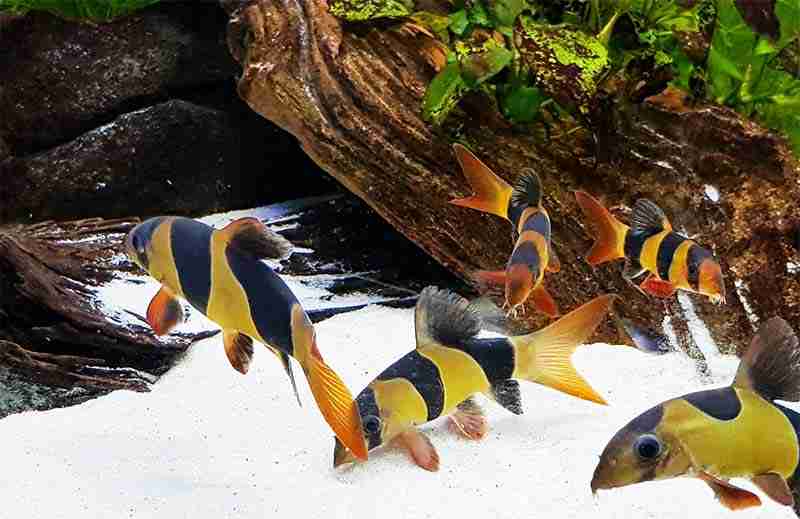
Clown Loach tank size is important as they are schooling fish, and when in groups, they will be more active and display much more of their natural behavior, especially in a well-planted tank with plenty of crevices to crawl through.
At What Size Should You Buy A Clown Loach?
It is pretty safe to buy a Clown Loach when it has reached around 5cm in length, any smaller than this, and it is still very young and more susceptible to illnesses and parasites or a general change in conditions.
You won’t often find baby clown loach for sale in pet stores as they are not the easiest to breed in captivity, so are generally caught in the wild.
Are Clown Loaches Hardy?
Clown Loaches are pretty hardy and cope well with new environments, especially an adult clown loach. but you will have the most problems when buying smaller than 5cm.
A healthy Clown Loach will display bright colors and have plenty of energy, so if they look pale or lethargic, stay away.
What Size Tank Does A Clown Loach Need?
Having a tank large enough for adult Clown Loach is important as it will give them the space they need to move around. Unless you plan to increase your tank size in the coming years, you should estimate the potential size at maturity and how many Loaches you intend to have.
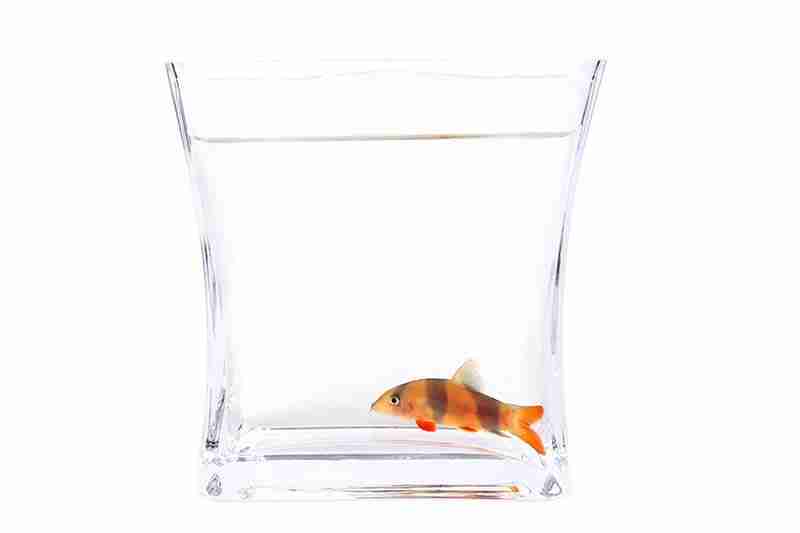
A rule of thumb would be that 1 adult Clown Loach would need a minimum tank size of around 30 gallons, so a group of 5 Clowns would need a minimum tank size of 150 gallons.
As Clown Loaches are bottom to mid-level dwellers, adding further fish that prefer to live at the mid to upper level of the tank should be fine, provided they are compatible and you keep your aquarium well oxygenated.
Wrap Up
When you see Clown Loaches swimming around at the local aquarium, they look pretty cute and mischievous, especially when they are small, but clown loaches will grow (HUGE!!), so make sure you can accommodate for this.
The cuteness and mischievous will stay throughout their lives, and provided you can cope with the extra growth, I have never heard of anyone who regretted having Clown Loaches in their aquarium.
Happy Fish Keeping!


